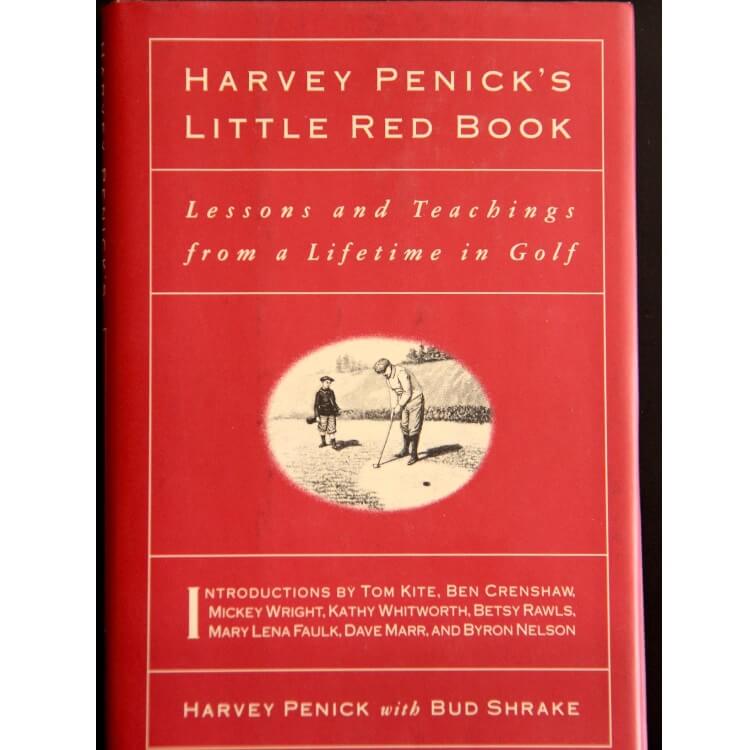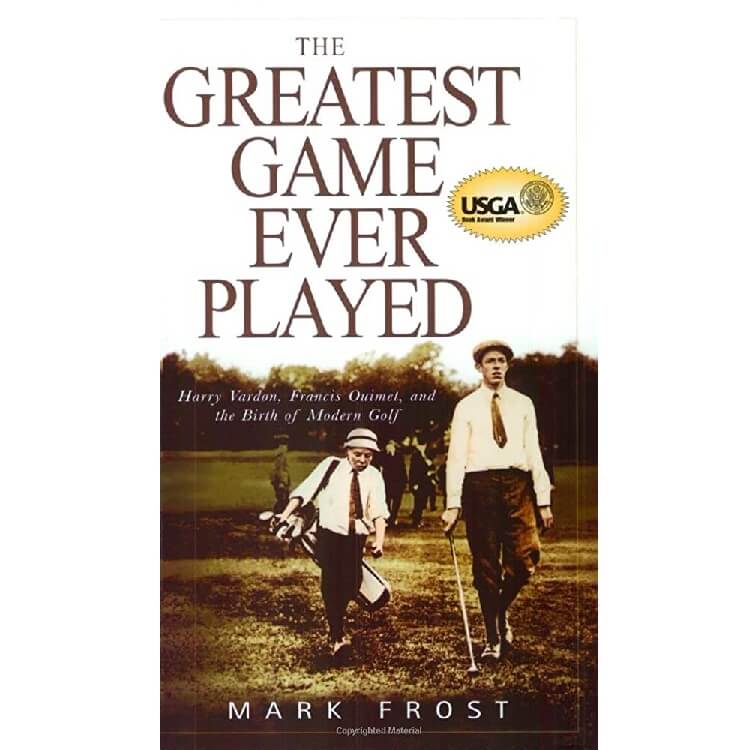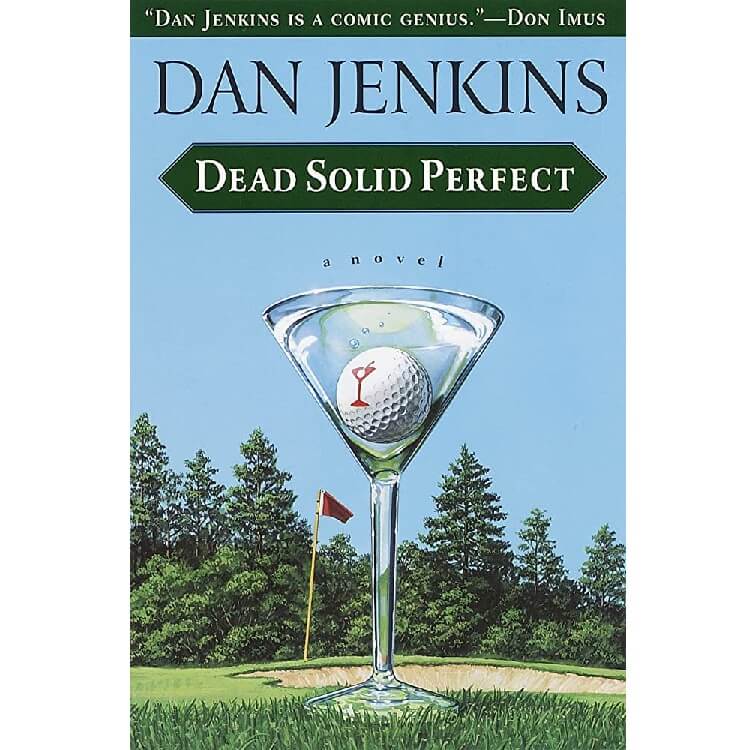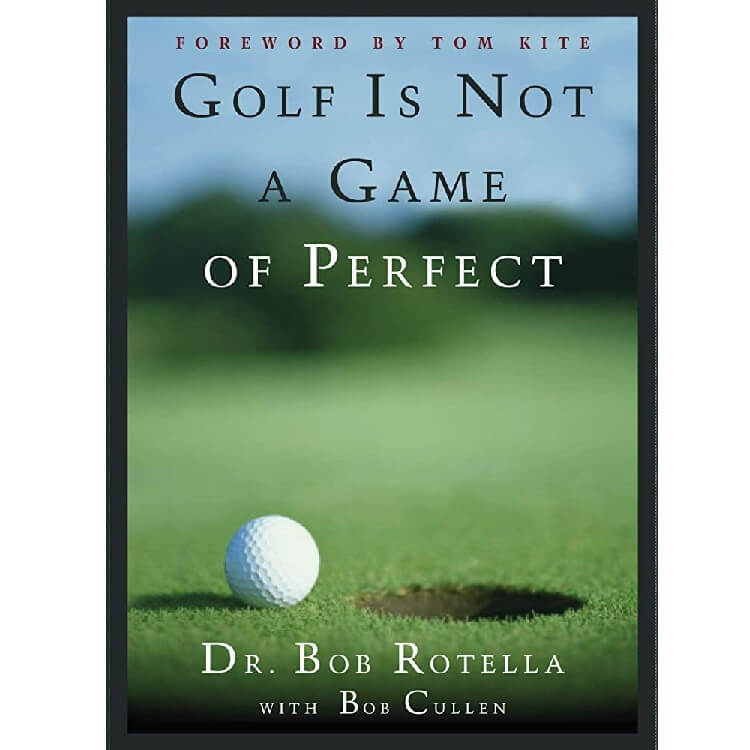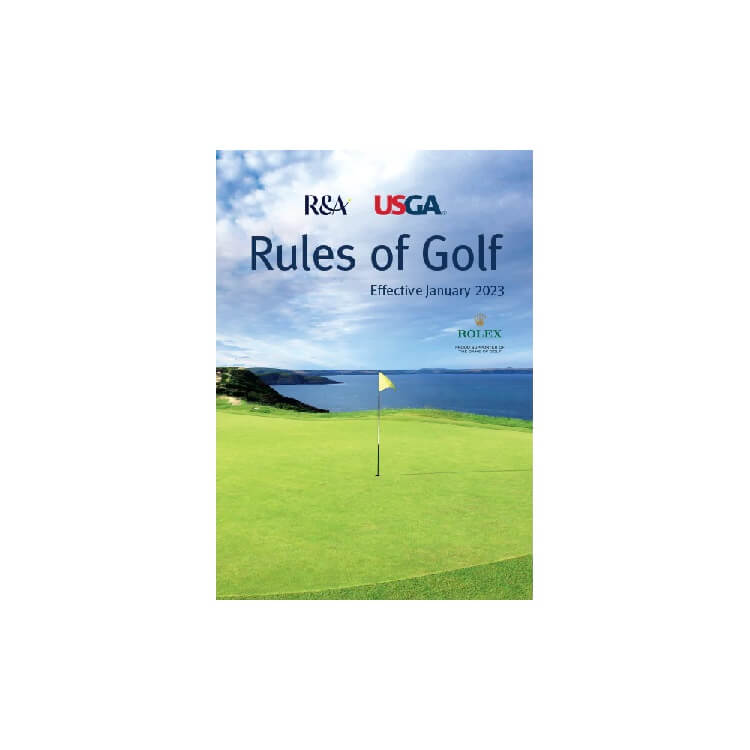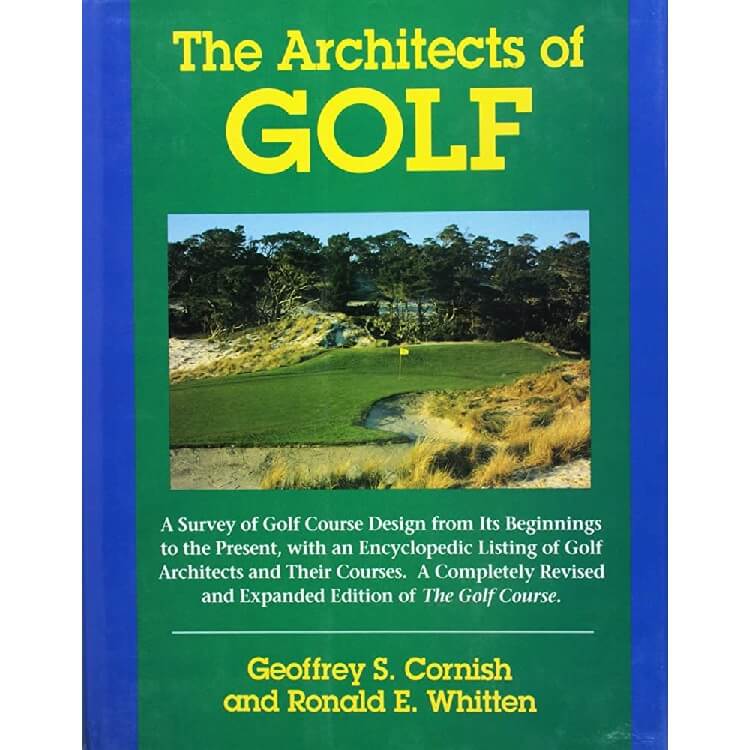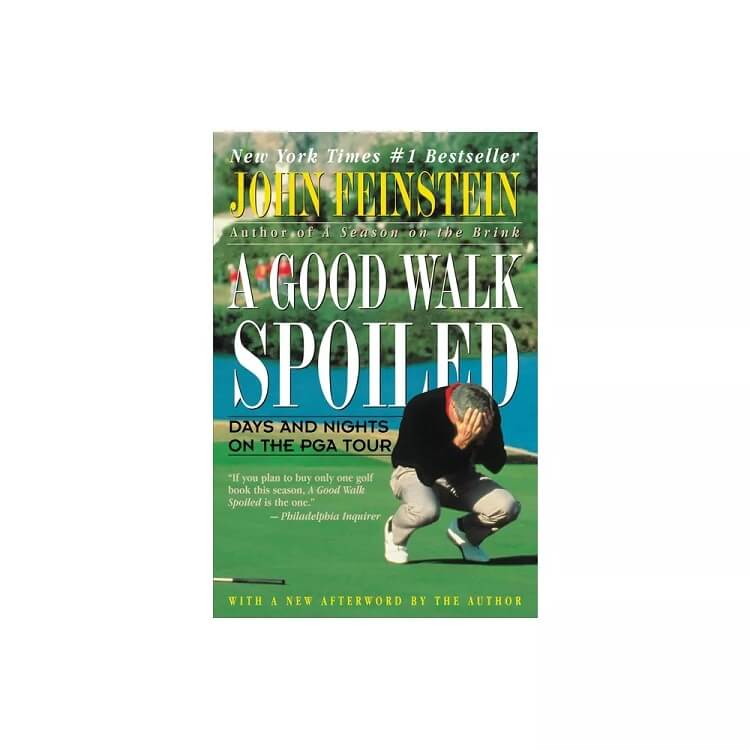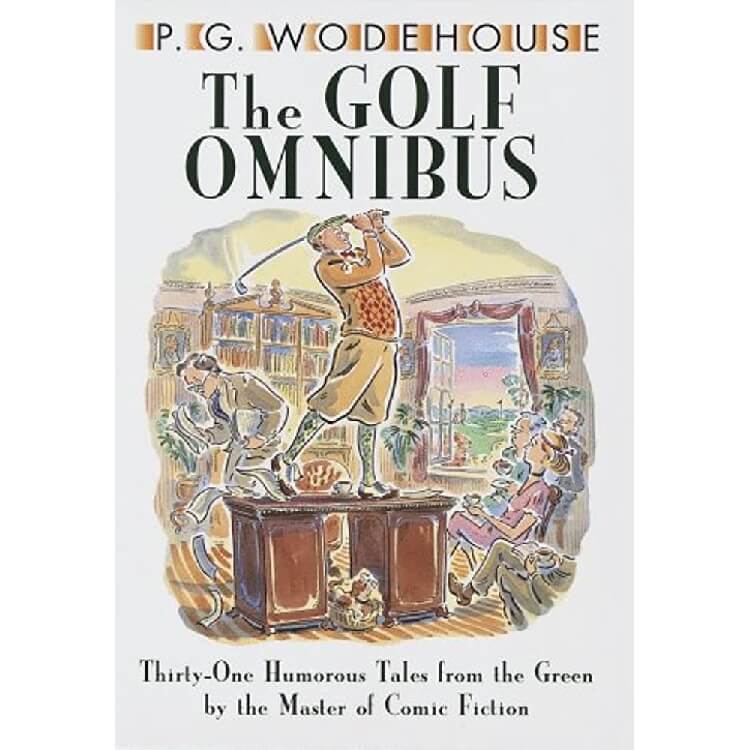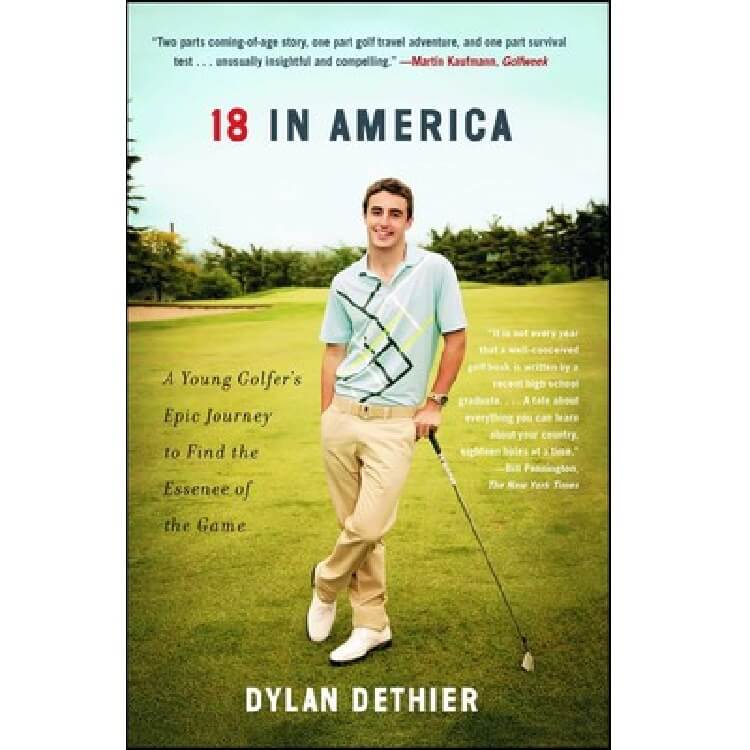Master your swing: the best golf books for every player

Golf is the most literary of sports. Perhaps it’s golf’s difficulty and the lifelong quest many players take on to play the game well that lends itself to page-turning drama. That “chasing the rainbow” quality of the sport can easily resemble the lifelong exploits you’ll find in the works of Homer or Tolkien — rendered against the backdrop of hobby or sport.
You’ll find inspiring quotes by the likes of Arnold Palmer or Bobby Jones on motivational posters. You’ll see golf insights in spiritual teachings on overcoming adversity or finding peace of mind. It’s up to the reader what to take away from such words.
Golf books usually fall into two categories: instructional or narrative. The former looks to teach everything from golf fundamentals to the finer points of on-course play. The latter relay the experiences of the sport’s greatest players while facing off on the world’s great courses. Still, when done right, the best golf books can both teach, amuse, and encourage all at the same time. It might even have you running to the store to get that new golf net you’ve been thinking about.
Top 12 golf books
Staff favorite: “Harvey Penick’s Little Red Book: Lessons and Teachings from a Lifetime in Golf” by Harvey Penick
Best budget: “Ben Hogan’s Five Lessons: The Modern Fundamentals of Golf” by Ben Hogan and Herbert Warren Wind
Best nonfiction: “The Greatest Game Ever Played” by Mark Frost
Best fiction: “Dead Solid Perfect” by Dan Jenkins
Best for psychological tools: “Golf Is Not a Game of Perfect” by Dr. Bob Rotella with Bob Cullen
Best argument ender: “Rules of Golf” by the USGA
Best look at design: ”The Architects of Golf” by Geoffrey S. Cornish and Ronald E. Whitten
Best for camaraderie: “A Good Walk Spoiled: Days and Nights on the PGA Tour” by John Feinstein
Best written by a player: “Bobby Jones on Golf: The Classic Instructional by Golf’s Greatest Legend” by Robert Tyre Jones
Best for a laugh: “The Golf Omnibus” by P.G. Wodehouse
Best for adolescents: “18 in America” by Dylan Dethier
Best for children: “The Golfer’s Zoo” by Shane Bacon
How we chose the best golf books
We read them, plain and simple. There’s no other way to pick the best tomes on the game. However, there are countless books on golf — more than any other sport in existence — as it’s been around for 500 years. Choosing the best golf books comes down to taste and overall significance to the game.
Staff favorite: “Harvey Penick’s Little Red Book: Lessons and Teachings from a Lifetime in Golf” by Harvey Penick
Staff favorite: “Harvey Penick’s Little Red Book: Lessons and Teachings from a Lifetime in Golf” by Harvey Penick
Benefits
— Includes all the fundamentals
— Relevant to golf today
— Easy, affordable read
Drawbacks
— A little dry
— Old-fashioned presentation
There are very few golf books that every player should read. “Harvey Penick’s Little Red Book” is one of those efforts. Its instruction, filled with the essential fundamentals for every element of the game, from fairway to bunker to green, is just as relevant now as it was when Penick learned the game decades ago. As a product of the early 1990s, though, the presentation is a little dry and old-fashioned. Nonetheless, it’s still a quick, easy, and helpful read.
Length: 176 pages | Author: Harvey Penick | Type: Educational
Best budget: “Ben Hogan’s Five Lessons: The Modern Fundamentals of Golf” by Ben Hogan and Herbert Warren Wind
Best budget: “Ben Hogan’s Five Lessons: The Modern Fundamentals of Golf” by Ben Hogan and Herbert Warren Wind
Benefits
— Written by a grand champion
— Excellent instruction
— Affordable
Drawbacks
— A little dated in presentation
The great Ben Hogan’s story, from his initial success to his recovery from a tragic automotive accident, is the stuff of a cinematic legend. Even though he won nine major championships on the tour of his era, he’s perhaps best known for his pure, gorgeous swing and straightforward collection of golf lessons.
The instructions in his book of five lessons are direct and endlessly helpful. Though written decades ago and a little stiff in its presentation, the work still relates to the essential points every golfer must learn. You can find this little gem for under $10 at multiple outlets.
Length: 128 pages | Author: Ben Hogan, Herbert Warren Wind | Type: Educational
Best nonfiction: “The Greatest Game Ever Played” by Mark Frost
Best nonfiction: “The Greatest Game Ever Played” by Mark Frost
Benefits
— A true but unlikely story
— Cinematic in presentation
— Written like a novel
Drawbacks
— Long read
Author Mark Frost documents the achievements of amateur golf champion Francis Ouimet and his shock victory at the 1913 U.S. Open against the game’s champions of the era. Ouimet worked in a store when invited to play in the major championship at the age of 20.
A thorough yet long read, this is prime golf nonfiction written in the style of a novel (even if the author takes a flight of fancy here and there). The book was compelling enough to be made into a movie by Disney in 2005.
Length: 496 pages | Author: Mark Frost | Type: Nonfiction
Best fiction: “Dead Solid Perfect” by Dan Jenkins
Best fiction: “Dead Solid Perfect” by Dan Jenkins
Benefits
— Written by a great sports writer
— Fast read
— An insider look at the PGA Tour
Drawbacks
— Cynical
— Not safe for work
Dan Jenkins remains one of the greatest sports writers of the 20th century in both fiction and nonfiction. Famous for the football novel and movie, “Semi-Touch,” Jenkins wrote multiple titles on golf. “Dead Solid Perfect” is the best of the bunch. Written only for adults in Jenkins’ bawdy tone, the book takes a derogatory insider’s look at the crazy, traveling circus life on the PGA Tour.
Length: 256 pages | Author: Dan Jenkins | Type: Fiction
Best for psychological tools: “Golf Is Not a Game of Perfect” by Dr. Bob Rotella with Bob Cullen
Best for psychological tools: “Golf Is Not a Game of Perfect” by Dr. Bob Rotella with Bob Cullen
Benefits
— Useful psychological insights
— Explores the inner game
— Written by a top performance coach
Drawbacks
— Not for practical playing tips
— Occasionally esoteric
Golf is the only major sport based, first and foremost, on stillness. From the quiet atmosphere of the golf course to the moment you stand over a putt, that stillness leads to unique psychological challenges of resisting tension and self-sabotage. This book by Dr. Rotella (an elite performance coach) explores the mental game of golf many players ignore.
While it’s not for players looking to learn the basics of playing the game, “Golf is Not a Game of Perfect” (a slight contradiction to our Best Fiction pick above) remains perhaps the best book out there on exploring the sport’s psychological challenges.
Length: 320 pages | Author: Dr. Bob Rotella, Bob Cullen | Type: Educational
Best argument ender: “Rules of Golf” by the USGA
Best argument ender: “Rules of Golf” by the USGA
Benefits
— The undisputed rules of golf
— Settles any on-course rule disagreements
— Compact and easy to carry in your bag
Drawbacks
— Not an exciting read
It’s as dry and dull as you might expect, but this collection of the official and undisputed rules of the game is essential for answering any on-course questions or settling any disagreement between players. Compact enough to fit in your golf bag, keeping the USGA’s collection around saves you from having to wonder what to do in any on-course situation.
Length: 244 pages | Author: USGA | Type: Educational
Best look at design: “The Architects of Golf” by Geoffrey S. Cornish and Ronald E. Whitten
Best look at design: “The Architects of Golf” by Geoffrey S. Cornish and Ronald E. Whitten
Benefits
— An in-depth look at golf design
— Includes looks at master designers
— Helps players analyze courses
Drawbacks
— More technical than artistic
— Lengthy read
These authors put together a comprehensive examination of golf course design and the men and women who create the tracks. The writing focuses more on the practical and technical sides of design over the purely aesthetic nature, but the authors don’t otherwise miss a stroke.
Understanding golf course design can improve how you play the game, as it helps you deconstruct a given hole and realize what the designer offers the player. Reading this massive examination helps to feed that skill.
Length: 656 pages | Author: Geoffrey S. Cornish, Ronald E. Whitten | Type: Educational
Best for camaraderie: “A Good Walk Spoiled: Days and Nights on the PGA Tour” by John Feinstein
Best for camaraderie: “A Good Walk Spoiled: Days and Nights on the PGA Tour” by John Feinstein
Benefits
— Relatable golf yarns for amateurs
— Solid insider’s look at the PGA Tour
— Written with affection
Drawbacks
— Occasional dry golf recaps
An in-depth look at life on the PGA Tour, the service this book does for the amateur golfer reveals how professionals face many of the same frustrations — only on a bigger stage. The writing brings pros and amateurs together, surrendering to golf’s injustices.
John Feinstein is one of golf’s greatest writers — just ask him. There’s no doubt that he relies on his basic reporting skills for content here. While he can come off a little full of himself at times, his love for the game is genuinely revealed in his writing. That affection is in full effect with “A Good Walk Spoiled.”
Length: 475 pages | Author: John Feinstein | Type: Nonfiction
Best written by a player: “Bobby Jones on Golf: The Classic Instructional by Golf’s Greatest Legend” by Robert Tyre Jones
Best written by a player: “Bobby Jones on Golf: The Classic Instructional by Golf’s Greatest Legend” by Robert Tyre Jones
Benefits
— Written genuinely by a legend
— Essential instruction
— Educational read
Drawbacks
— Written decades ago
— Doesn’t consider changes in equipment
Many of golf’s top champions wrote instructional books. You can consider it an essential rite of passage for Arnold Palmer, Jack Nicklaus, and Tiger Woods, among others. However, it’s unlikely that those legends sat down in front of the keyboard and banged out pages every day. Bobby Jones, however, wrote his own golf observations and instructions in his voice.
Still the greatest amateur player in the sport’s history, Jones ensured his instructional book included all the essential pointers. He presented them as best a champion of the 1930s can and couldn’t have imagined the pieces of golf technology we play with today. If you cut him some verbal slack, this book is a gold mine of tips.
Length: 246 pages | Author: Robert Tyre Jones | Type: Educational
Best for a laugh: “The Golf Omnibus” by P.G. Wodehouse
Best for a laugh: “The Golf Omnibus” by P.G. Wodehouse
Benefits
— Written by a talented author
— Genuinely funny
— Touches on classic golf stories
Drawbacks
— Dry humor
— A little old-fashioned
While every golfer needs a good collection of golf jokes, “The Golf Omnibus” is a much more polished and sophisticated presentation of golf anecdotes. P.G. Wodehouse is a British humorist best known for his “Jeeves and Wooster” British comedy-drama TV series. Still, he loved the game and wrote about its quirks extensively.
Wodehouse helped to define the dryness of modern British humor, so be prepared for subtlety and wit over big, bawdy laughs — but the former works much better for golf.
Length: 464 pages | Author: P.G. Wodehouse | Type: Humor
Best for adolescents: “18 in America” by Dylan Dethier
Best for adolescents: “18 in America” by Dylan Dethier
Benefits
— Original concept
— A scope beyond golf
— A true yarn
Drawbacks
— Written by a young author lacking experience
Dylan Dethier set out on his own to play golf in all 48 states. This real-life adventure documents his golfing progress and travel challenges as the world opened up to him as a young man. Just as he was learning how to travel and survive in the book, Dethier learns to write while composing his prose. As a result, his diction is limited at times. Still, it’s such a gutsy concept that it’s worth a look from young readers and adults.
Length: 272 pages | Author: Dylan Dethier | Type: Coming-of-age
Best for children: “The Golfer’s Zoo” by Shane Bacon
Best for children: “The Golfer’s Zoo” by Shane Bacon
Benefits
— Clever abstract concept
— Colorful artwork
— Positive golf message
Drawbacks
— A little long and too abstract for much younger kids
— Not targeted at adults
“The Golfer’s Zoo” looks to introduce golf to children by exploring the environment and its friendly creatures instead of focusing on putters, swings, and scorecards. The idea is to inform young children about the wonderful game using colorful imagery and whimsical takes on the animal world without really exploring how to play it — yet.
Obviously, it’s a children’s book and not an essential addition to an adult’s library. Meanwhile, finding a small child interested in golf can be a challenge. If you’re lucky enough to find one, this book makes a great gift.
Length: 32 pages | Author: Shane Bacon | Type: Children’s book
If you can’t play it, read about it
Enough golf books are out there to keep your reading schedule locked up for the rest of your days. Of course, it’s better to play the game than to read about it, so it’s best to pick your shots in the literary links game.
While some of these titles look to entertain you, there’s not a single book in this collection that won’t teach you something important about the game. That’s what’s exceptionally great about golf books and how the sport intertwines so fluidly with great storytelling.
How to pick the right golf book for you
Ask yourself if you’re looking for instruction or entertainment. Do you want to be amused by witty portrayals of the game’s highs and lows? Are you on the hunt to play better golf? Once you figure that out, decide if you want classic observations by players and authors of past eras who conceived the fundamentals of the sport or contemporary writers more in touch with today’s game.
Once you pin down what you need and want to read, you have a literary selection to choose from on this list and endless stacks of additional books waiting for you at the library or local bookstore.
FAQ
What’s the best book on golf fundamentals?
You’ll get some debate on this between the two old classics, “Harvey Penick’s Little Red Book: Lessons and Teachings from a Lifetime in Golf” and Ben Hogan’s “Five Lessons: The Modern Fundamentals of Golf.” Both are works you should stick into the hands of any kid just picking up the game. To choose a winner between the two, we look to the nine major titles Hogan won in his lifetime. You can’t go wrong learning from a champion.
What’s the booklet that golfers use?
If you’re watching professional golfers on tour and wonder what that booklet is tucked into their back pockets or entrusted to their caddies, that’s a yardage book. All elite courses have them, and they include detailed overviews of every hole on the course, including distance markers to help a player get a sense of what club to use and what lies ahead.
Golfers don’t usually carry the USGA “Rules of Golf” with them, as rules officials wait on every hole to answer specific questions or settle disputes.
What’s the hardest thing to learn in golf?
You could ask 100 teaching pros that question and get 100 different answers. Still, you’ll find some consensus that the most challenging thing to teach in the sport is the release of the golf club. By release, we don’t mean throwing the golf club down the course. The term refers to physics. At a given point in every good golf swing, the player gives up control of the club and allows momentum to take over the swing.
Natural movement provides more speed and power than raw human effort, so releasing the club is essential for solid contact and maximum distance. Pros recommend swinging a towel or something flexible to get a feel of “swishing” a golf club through contact to teach this sensation.

